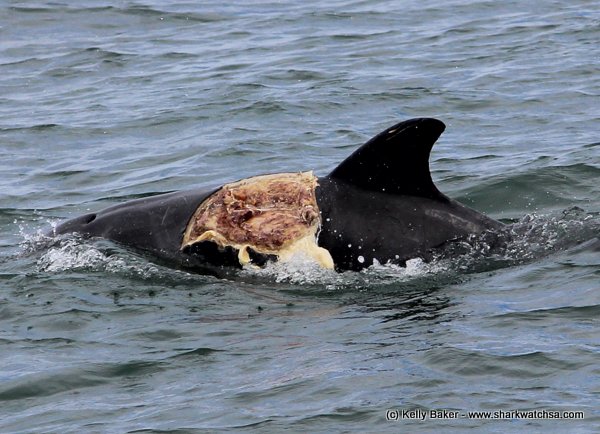Injured Indo-Pacific bottlenose dolphin | 10 March 2014

The crew on Slasfhin were surprised when they came across an injured Bottlenose dolphin that sustained an injury through a possible shark encounter. The dolphin was spotted from our shark cage diving vessel in close proximity of Dyer Island. It appeared that the individual did not want to interact with us, so we moved along to the island.
A similar incident was reported a few years back. Read more here: http://www.bioone.org/doi/abs/10.3957/056.040.0212
We would like to request that anyone who spots the dolphin should please inform us as we would like to follow its progress.
Please contact us via email at anwynn@sharkwatchsa.com or the Dyer Island Conservation Trust office@dict.org.za
_1420x587_crop_80.jpg)







